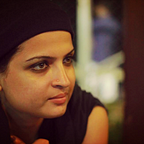India Refuses To Certify Films In Which Women Have Desires
A Certification Board That Is Anti-Woman Just Like Its Government
Picture this: A woman storms into a room with a man, who holds and kisses her passionately, both taking their clothes off as they proceed to the bed. They fall effortlessly on it, caressing each other’s body, moaning and clawing! They have a night of sizzling, blissful sex until they fall asleep in exhaustion.
In most movies, this would seem a pretty straightforward scene. The man is just being ‘the man’, because he has ‘needs’ and all this is so ‘normal’. But if I tell you that this is not a film about marriage or love-leading-to-marriage, would your prejudices start kicking in then? And if I told you that she is an independent woman, who has one-night stands with consenting adults because SHE wants to have sex, I can almost imagine the veins popping on your face.
Audiences are only too willing to cheer raucously when a hero “scores” a woman — an ugly euphemism for sex later that night — sometimes with all too blurry lines of consent. When there is a woman plonked on the screen (by a male director) who is all too willing to perform sexual favours because the hero has charmed her, there is nothing you can find wrong about it. But when a woman wants to ride the horse whenever she wants (the pun is intended), it somehow threatens most men’s masculinity.
I wonder if we should call the Central Board of Film Certification a cultural and primitive cow, or the infamous elephant in the room that people are turning a blind eye to. We could also call the CBFC a moody chameleon because it certifies films based on the whims of the ruling government’s views on women. Like all things go in India, the film certification board is anti-woman too. By asserting that women having/desiring sex as unnatural or worth a ban, I wonder if they lost their minds. Because who are heterosexual men having sex with then?
While it is not fair to say that films on women’s sexuality are absent, because we have had gems like Rihaee, Paroma, Paromitar Ek Din, Aval Appadithan, Antarjali Jatra and so on, there are many many more such films that have been denied certification or worse, banned for good. And yet, we have so many films made by and about women with blatant misogyny and objectification.
The fact that films like Lipstick Under My Burkha, Ka Bodyscapes (and many others before) were denied certification is hardly a surprise. Liberals were quick to condemn ex-Chairman Pahlaj Nihalani for this, but is he the problem here? He is but a barricade — an irrational, obsequious barricade that simply follows orders from on high. A barricade that plays exactly to the patriarchal formula, as you can see with his own “creative” efforts from the past.
When I contacted her about her experience dealing with the CBFC, Alankrita said: “I think as young filmmakers we should continue on our path of making the films we believe in. I am certain that our commitment and sincerity and single-minded dedication will open up the way forward. We have to be courageous and unafraid. And we have to claim the freedom of expression that the Constitution promises us.”
The usual excuse for the board to deny certification is that the “story is lady oriented” or “their fantasy above their life.” It also said that the film like Lipstick had “sexual scenes, abusive words, audio pornography.” I can’t stop wondering about just a tiny little anomaly in it. If we remove the words “lady-oriented,” I dare them to name one film that does not contain one or more of the stated objections. Bear in mind that the ‘Masti’ series were given certification for not just one, but FOUR atrociously female objectifying films.
Contrary to popular belief the number of women making films is NOT on the rise. I would urge the people who make such claims to turn to history. According to my knowledge, the gap is only widening. If in the past there were five women for every 50 filmmakers, having 100 women for every 5000 filmmakers is not exactly progress. What’s worse, when women make films, the universe is up in arms at every step of the process. We know of many morbid tales of women not finding a producer or distributor for a script that is too “lady-oriented.”
So should we stop making films about women and topics focused on women? We must be making more of them. Despite the difficult times we are in, female filmmakers must grit our teeth and push harder to make our stories heard. The more such films get stuck at the barricade, the more we know that we are doing something right; we are disrupting the power politics and intimidating patriarchy. But that alone won’t do.
What we need is a radical transformation with the way we view sex, to be able to talk about it openly, without feeling either awkward or making another person uncomfortable. But what we certainly must not do is clamp down, especially on the voices of the marginalised. In a world where stalking, abuse and assault are normalised and glorified by the power of cinema, pretending that women do not have desires or fantasies about sex or sexuality is not solving the problem as much as it is catalysing abuse.
With the kind of presidents “grabbing pussy” and decriminalising domestic violence, regressive politics in India isn’t a surprise. We have been fighting this war of dissent for a while now. But a question begs to be answered: if portraying a woman wanting to have sex can threaten the foundations of our existence, what does it say about the people leading us?
